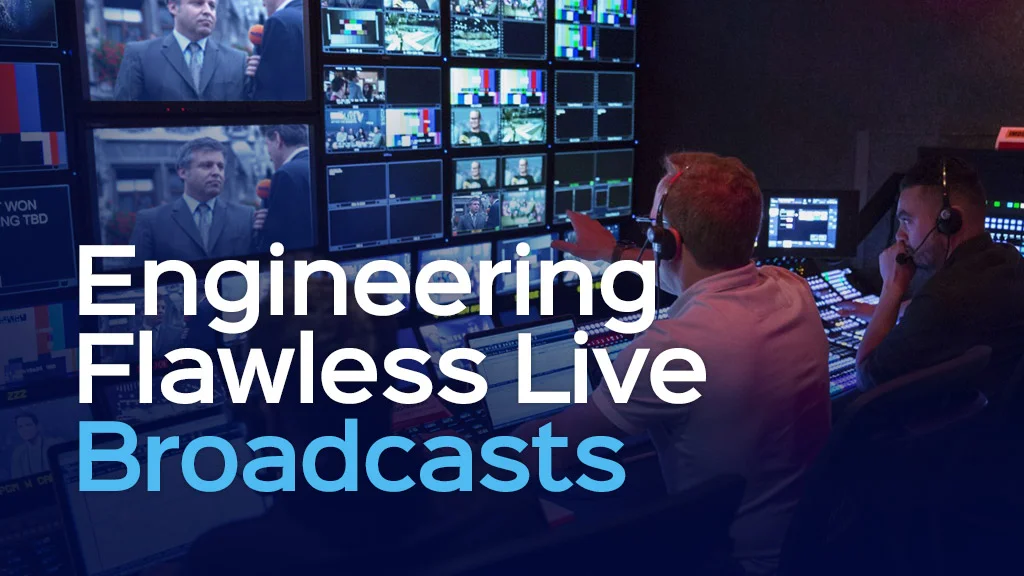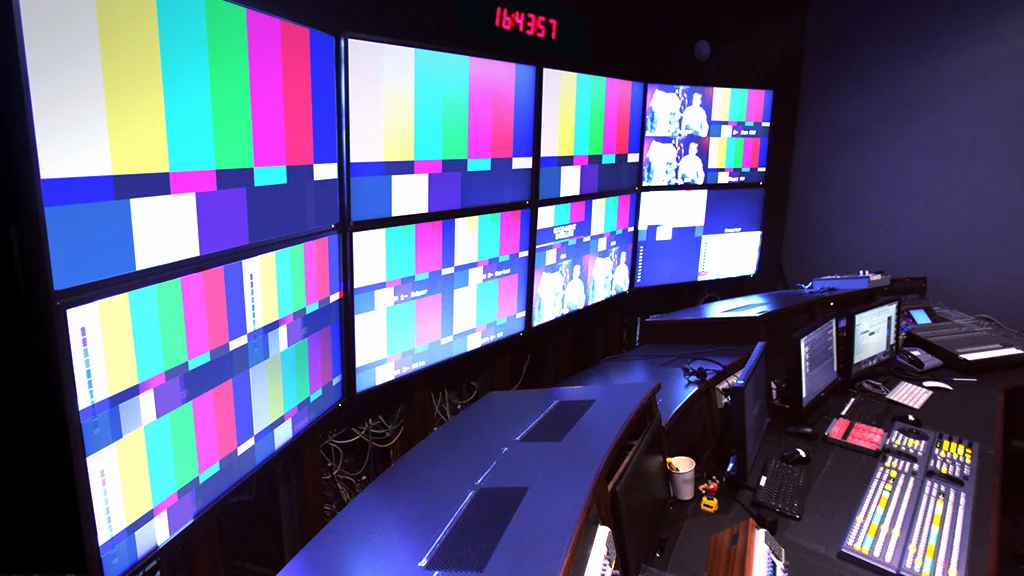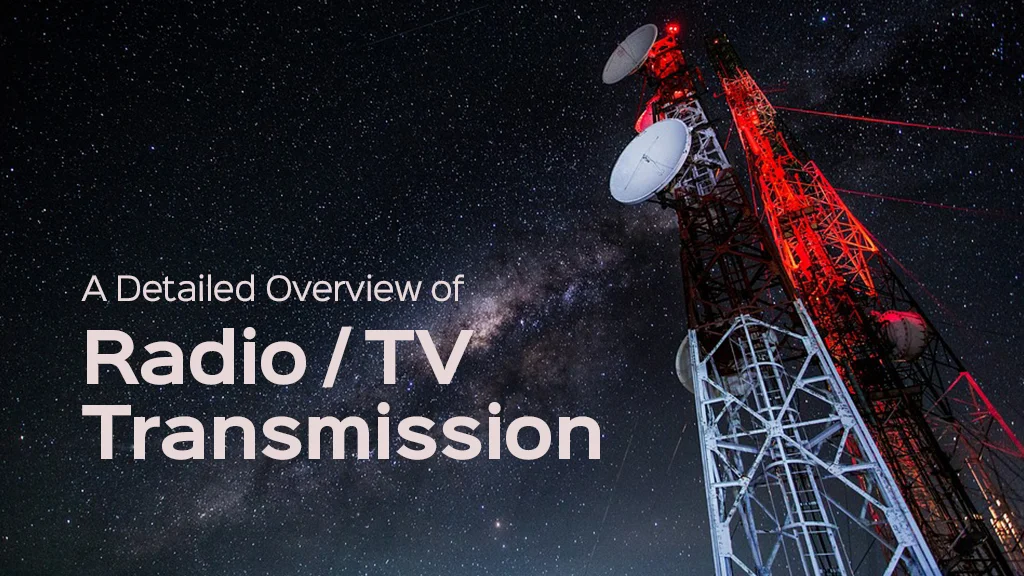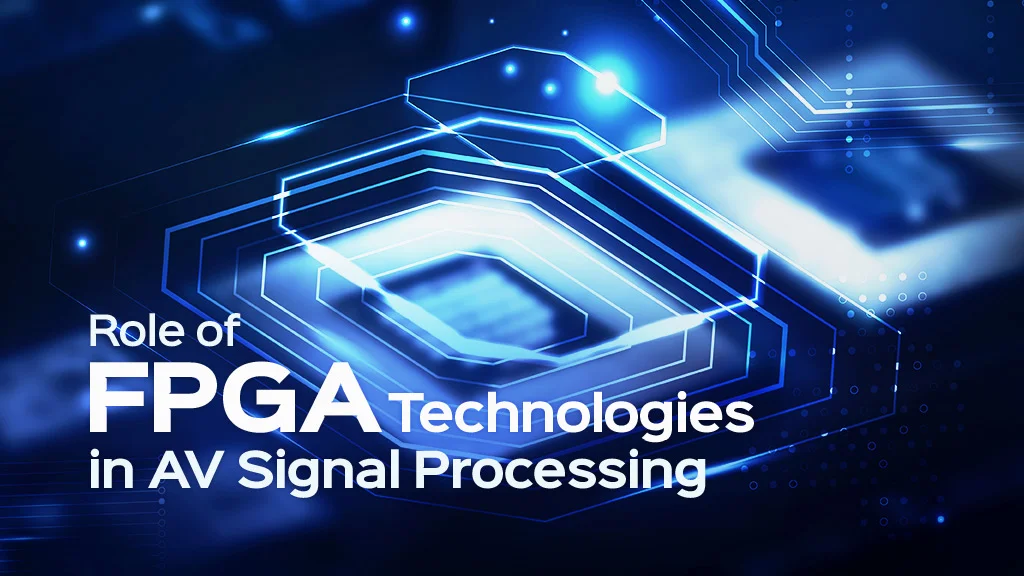
- Academy
- Article
How FPGA Technology Elevates Audio Video Signal Processing
FPGAs (Field-Programmable Gate Arrays) are essential in audio and video signal processing due to their flexibility, performance, and ability to handle real-time data. They enable various signal processing tasks, including filtering, sampling rate conversion, and video encoding/decoding, benefiting from parallel processing capabilities for low-latency applications like live broadcasting.
Key advantages of FPGAs include their programmability, reconfigurability, and customizable hardware, allowing for tailored processing pipelines. They can also work alongside other technologies, such as DSPs and AI/ML systems, enhancing performance and integrating intelligent features. However, challenges such as complex development and cost considerations exist. Current trends in video processing with FPGA technology include supporting high resolutions (4K/8K), incorporating AI capabilities, integrating with edge computing for low-latency processing, and improving user-friendly development tools.
Overall, FPGAs are poised to play an increasingly crucial role in advancing audio and video signal processing solutions, meeting the growing demand for high-quality multimedia experiences.
FPGA’s Role in AV Signal Processing
In the realm of audio signal processing, FPGAs can implement various digital filtering techniques that enhance sound quality, allowing for tasks such as noise reduction, equalization, and dynamic range compression. Their ability to process multiple audio streams simultaneously makes them ideal for applications in professional audio systems, live sound environments, and Live Broadcast Solutions .
For video processing with FPGA, these devices excel at tasks such as rate conversion, video scaling, and image enhancement. They can execute complex algorithms that improve video quality, such as deinterlacing, noise reduction, and color correction, all while maintaining low latency. The parallel processing capabilities of FPGAs enable them to seamlessly handle high-definition video streams, making them suitable for applications in video conferencing, broadcasting and real-time video analytics.
Moreover, FPGAs offer customization and flexibility, allowing developers to tailor processing algorithms to specific requirements. This adaptability ensures high-quality output while minimizing resource utilization, making FPGAs an invaluable asset in modern signal processing applications. Their capacity to evolve with emerging standards and technologies further solidifies their role as a cornerstone in the field of audio and video signal processing.
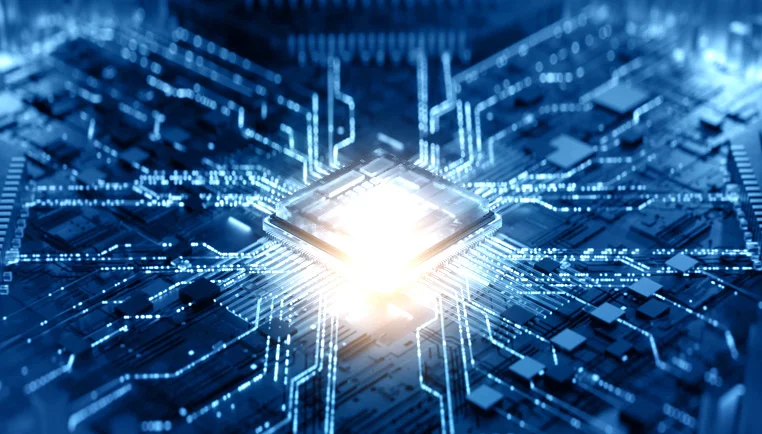
Benefits of FPGAs in Audio-Video Signal Processing
FPGA signal processing offers numerous advantages in audio and video signal processing, making it a preferred choice for many applications in this domain. Here are the key benefits:
High Throughput
With FPGA digital signal processing, vast amounts of data can be managed simultaneously, which is essential for processing high-resolution audio and video signals.
Low Latency and Real-Time Processing
One of the key advantages of video processing with FPGA is its ability to minimize latency while delivering real-time results. This is crucial for applications such as live streaming, broadcasting, and gaming, where even a few milliseconds of delay can significantly impact user experience.
Reconfigurability, Customization and Flexibility
FPGAs can be configured and reprogrammed to implement specific algorithms or adapt to new compression standards, formats, or processing techniques. This flexibility allows developers to quickly modify designs in response to changing requirements without the need for new hardware.
Parallel Processing
FPGAs excel in executing parallel tasks, making them ideal for complex audio video processing chains, such as mixing, filtering, encoding, and decoding, format conversions. This capability is essential in applications like real-time video processing where multiple pixels can be processed simultaneously.
Integration of Multiple Functions
FPGAs can integrate diverse functionalities, such as video encoding, decoding, filtering, and audio processing, on a single chip. This reduces the need for multiple chips, leading to lower power consumption and smaller device footprints.
Cost-Effective in Low to Medium Volumes
While FPGAs may have higher upfront costs compared to ASICs (Application-Specific Integrated Circuits), they can be more cost-effective for low to medium production volumes. Their ability to allow rapid prototyping and experimentation before finalizing a design can also reduce overall development costs.
Support for High-Resolution Formats
FPGA digital signal processing is well-suited for high-resolution audio formats (like high-bit-rate PCM and DSD) and video formats (such as 4K and 8K). This capability is essential in professional settings where high fidelity and quality are critical.
Power Efficiency
With careful design, FPGAs can be optimized for power efficiency, allowing for high performance without excessive power consumption. This is particularly important in portable devices where battery life is a key concern.
What’s the Difference Between DSP and FPGA?
In the field of audio and video signal processing, digital signal processing (DSP) and FPGA signal processing are two popular technologies, each with distinct characteristics, advantages, and use cases. Here’s a breakdown of their differences:
Architecture
- DSPs are specialized microprocessors designed specifically for digital signal processing tasks. They typically have a fixed architecture optimized for executing algorithms that involve mathematical operations, especially those related to signal processing, such as filtering and transformations.
- FPGAs are highly flexible hardware devices that consist of an array of programmable logic blocks, interconnections, and I/O pins. Users can configure the hardware to implement virtually any digital logic circuit, allowing for custom architectures tailored to specific processing needs.
Flexibility and Reconfiguration
- While DSPs can be programmable and allow for changes to the software, their underlying architecture is fixed. This limits the ability to redesign hardware aspects of the processing pipeline without changing to a different chip.
- FPGAs offer extensive flexibility, enabling users to reprogram and reconfigure the hardware to meet different processing requirements dynamically. This adaptability is particularly beneficial when standards or requirements change.
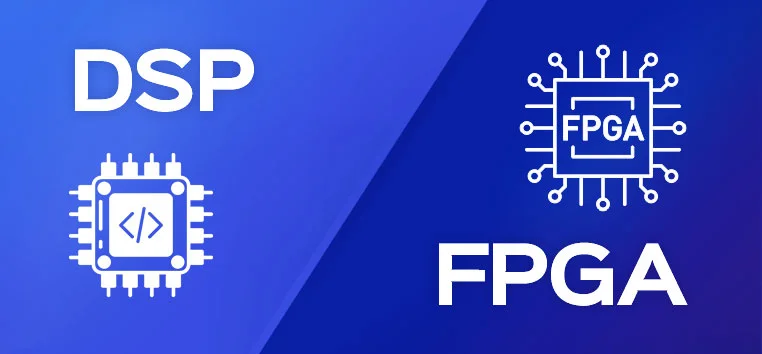
Performance
- DSPs excel in executing predefined algorithms efficiently, particularly those that involve complex mathematical computations. They often feature specialized instructions and accelerators for common DSP tasks, making them well-suited for real-time processing in fixed-function applications.
- FPGAs provide high parallel signal processing capabilities, allowing the simultaneous execution of multiple tasks. When properly designed, FPGAs can outperform DSPs in applications requiring high throughput and low latency, such as high-resolution video and multi-channel audio processing.
Development Complexity
- Developing on DSPs typically involves writing software in high-level programming languages like C or assembly. The learning curve may be less steep for programmers familiar with traditional software development.
- Programming FPGAs often requires knowledge of hardware description languages (HDLs) like VHDL or Verilog, which can be more complex than high-level programming. However, tools for high-level synthesis (HLS) are emerging, allowing developers to write in C/C++ and generate HDL code automatically.
Power Consumption
- DSPs are generally designed for energy-efficient processing and, when used for specific tasks, can consume less power than FPGAs for those predefined tasks.
- FPGAs can have higher static and dynamic power consumption than DSPs, particularly when performing tasks not optimized for their architecture. Power efficiency can vary widely based on the specific application and design.
Cost Considerations
- DSPs are often less expensive for mass production in dedicated applications due to their fixed architecture. They offer a cost-effective solution for applications with fixed requirements.
- While FPGAs may have a higher initial cost, they can be more cost-effective for smaller production volumes or applications where flexibility and reconfigurability are crucial. The cost per unit can be higher for large-scale production due to the added complexity of the FPGA’s configural capabilities.
In summary, the choice between DSPs and FPGAs for audio and video signal processing depends on various factors, including application requirements, performance needs, development complexity, and cost considerations. DSPs are ideal for well-defined, computationally intensive tasks, while FPGAs provide unparalleled flexibility and parallel processing capabilities, making them suitable for evolving and complex signal processing applications. Understanding these differences can guide engineers and designers in selecting the most appropriate technology for their specific needs in audio and video processing.
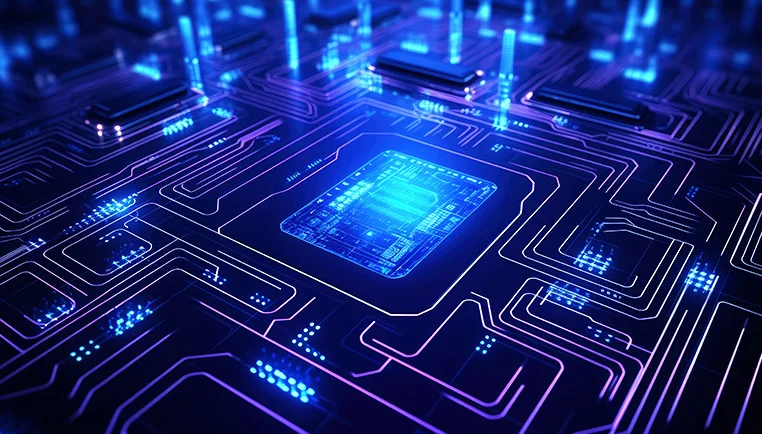
Innovations based on FPGA and Audio Video Signal Processing
FPGAs have been at the core of several innovations.
Integration with 4K/8K Video Processing Systems
The transition to 4K and 8K video formats requires significantly higher bandwidth and processing capabilities. FPGAs are well-suited to manage these increased data rates through their parallel processing abilities, facilitating real-time video encoding and decoding.
Support for Advanced Video Codec Standards
Video codecs like HEVC (H.265), VVC and AV1 are essential for efficient streaming at high resolutions. FPGAs can be programmed to support these standards, allowing for hardware-accelerated video encoding and decoding, which improves overall performance.
AI and Machine Learning Integration
The combination of AI and machine learning with FPGA signal processing enables real-time video analytics, enhancing applications such as object detection and scene understanding. Additionally, AI improves audio processing by enabling features like noise suppression and real-time audio translation.
Increased Use in Edge Computing
As more devices process audio and video data on-site (at the edge), FPGAs will become vital in enabling real-time data processing without relying on centralized cloud solutions. This trend is also driven by a focus on energy-efficient solutions, as FPGAs can deliver high performance with low power consumption.
Development of All-in-One Solutions
There is a growing trend to integrate FPGAs with traditional processors in System-on-Chip (SoC) designs. This approach allows for synchronized processing of audio and video streams in a single package, enhancing efficiency and performance. Additionally, future FPGAs may support multiple communication protocols for better integration.
Improved Software and Tooling
The development of more user-friendly programming tools, such as high-level synthesis (HLS) tools, is increasing. These tools enable developers to program FPGAs using higher-level languages, speeding up the development process. The availability of pre-built reference designs and intellectual property (IP) cores for audio-video signal processing also simplifies the development workflow.

